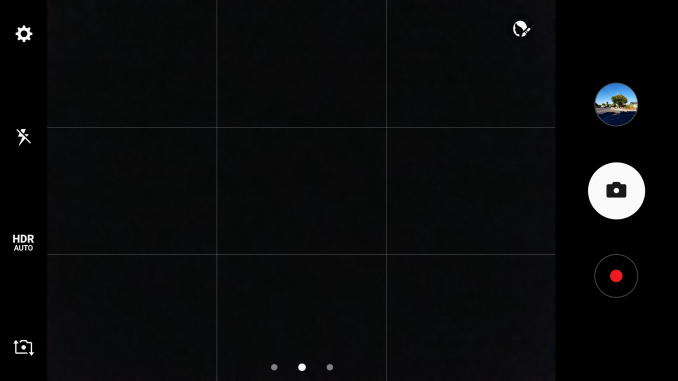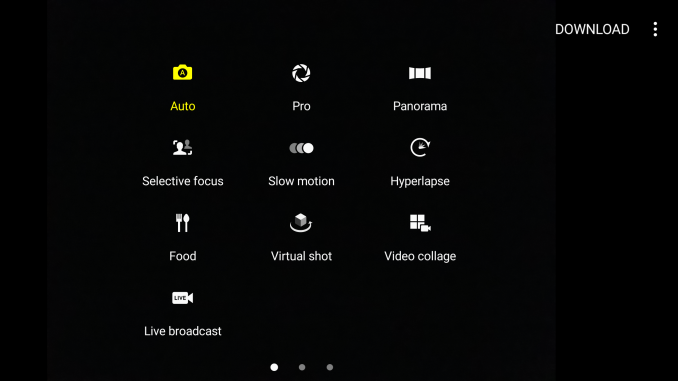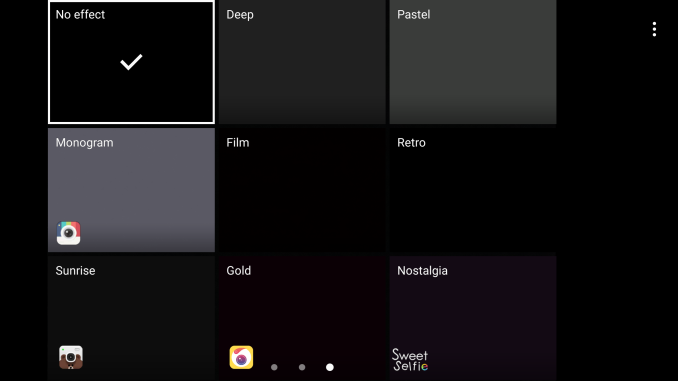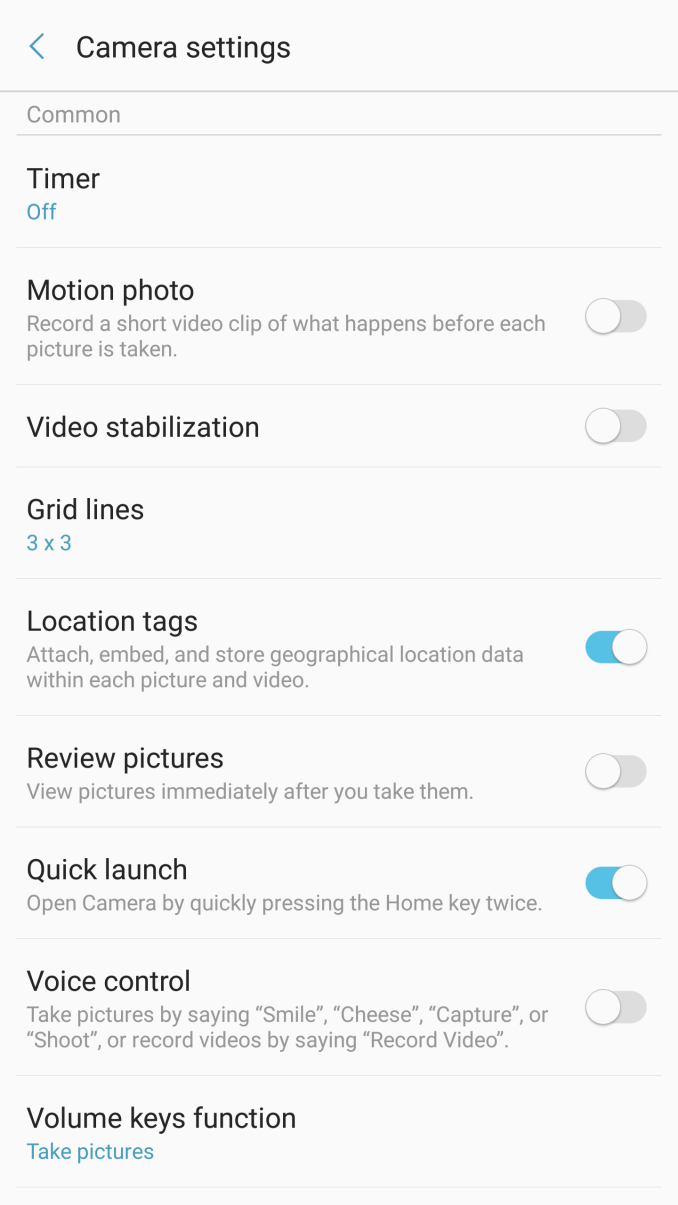The Samsung Galaxy Note7 (S820) Review
by Joshua Ho on August 16, 2016 9:00 AM ESTCamera Architecture
In general, camera has become probably the single biggest point of differentiation between smartphones at this point. As smartphones are often the only camera that most people carry on a day to day basis, the rear camera on a smartphone really cannot be a disappointment relative to the competition. While we can talk about how much a front-facing camera matters in terms of quality, it’s pretty safe to say that for photos and videos that are worth saving will be taken with the rear-facing camera.
While post-processing and a number of other factors are going to have a huge impact on the overall camera experience, the foundation that makes it possible to deliver a great camera is always going to start at the hardware.
| Samsung Galaxy Note Cameras | ||||
| Galaxy S6 Galaxy Note5 |
Galaxy S7 Galaxy Note7 |
|||
| Front Camera | 5.0MP | 5.0MP | ||
| Front Camera - Sensor | Samsung S5K4E6 (1.34 µm, 1/4") |
Samsung S5K4E6 (1.34 µm, 1/4") |
||
| Front Camera - Focal Length | 2.2mm (22mm eff) | 2.1mm (21mm eff) | ||
| Front Camera - Max Aperture | F/1.9 | F/1.7 | ||
| Rear Camera | 16MP | 12MP | ||
| Rear Camera - Sensor | Sony IMX240 Samsung S5K2P2 (1.12 µm, 1/2.6") |
Sony IMX260 Samsung S5K2L1 (1.4 µm, 1/2.6") |
||
| Rear Camera - Focal Length | 4.3mm (28mm eff) | 4.2mm (26mm eff) | ||
| Rear Camera - Max Aperture | F/1.9 | F/1.7 | ||
It’s probably not any surprise that the Galaxy Note7 has the same exact camera setup as the Galaxy S7, but in case it was ever in doubt it shouldn’t be now. Given the similar camera setup I don’t think that there’s a ton of difference to be expected between the two phones but things like software algorithms can and do change with time so it’s important to not just immediately write off the Galaxy Note7 or assume it’s immediately going to be award-winning. It’s worth reiterating here that the dual pixel system likely incurs a sensitivity penalty as in order to implement the dual pixel system each pixel must have a physical light barrier as you need a microlens and a barrier to make light from the same object converge on two separate photodiodes so the amount of light collected is inherently going to be less than no barrier and a single photodiode per pixel. I’m also curious to know whether any quantum effects appreciably change sensitivity here as if a single pixel is a 1.4 micron square then each photodiode has area similar to a 1-micron pixel. With that said we can move on to the one major change highlighted by Samsung, namely the user experience.
Camera UX
One of the major points highlighted in the launch event was that the camera application was completely redesigned. In addition to a fairly subdued icon that better fits the color palette for Android in general, the UI itself is a bit cleaner out of the box.
Right away when you open the camera app the most apparent thing is that the number of icons has been reduced. Instead of a dedicated mode button it’s now a swipe, and the same is true of the effects button. There’s also no more timer or resolution button on the screen by default, and the button to hide the various settings buttons has been eliminated entirely. It’s also worth mentioning that the button to change between cameras has been moved and a gesture to do the same thing has been added so you can simply swipe up or down to switch between cameras. Samsung also continues to shut off the camera after a few minutes automatically which is good if you’re a normal user but annoying if you’re trying to set up a shot of an ISO chart with a tripod.
Other than these changes almost nothing else really changes. There are some extra toggles like shape correction in the settings overflow and RAW output is now hidden under Picture Size for the rear camera but nothing else is really notable. I don’t really have anything else to say here that’s new, and I would refer to the Galaxy S7 Part 2 review if you are otherwise unfamiliar with Samsung’s camera application. As both perform identically as far as focus and capture speed goes subjectively we’ll temporarily forgo these results in favor of timeliness for this review.















202 Comments
View All Comments
Meteor2 - Saturday, August 20, 2016 - link
The trick with Nexus is not to scroll continuously. Rather than scroll line by line, read a page of text, scroll it down in one motion, read the next section. Saves a lot of power.KoolAidMan1 - Tuesday, August 16, 2016 - link
Just Android thingsTechguy89 - Tuesday, August 16, 2016 - link
It's clear that Samsun really needs to invest in its Exynos chip and drop Snapdragon. They're still not evetop on Apple A9's level after an entire 11 months and all their 2016 flagships. Let's see how much wider the gap gets again with A10.Geranium - Tuesday, August 16, 2016 - link
Apple SoC performes better running Apple optimized benchmark.xype - Tuesday, August 16, 2016 - link
Yes, and Apple uses dark magic to make the UI stutter and calculations slower on select Android devices. True story.Geranium - Tuesday, August 16, 2016 - link
Yep, because Android don't run Objective-C or Swift based benchmark. But most benchmark cross platform benchmark use those two.And a 100$-200$ Android phone may stutter, but you can compare it with 700$ phone.
Geranium - Tuesday, August 16, 2016 - link
And if you think no stuttering means better OS, than my Nokia 206 running S40 is better OS both iOS and Android. Because it never stutters.Bluetooth - Tuesday, August 16, 2016 - link
These are Javascript benchmarks that are not running in ObjC or Swift. It's measuring the browsing usage performance and work on all browser that run Javascript.lilmoe - Tuesday, August 16, 2016 - link
Please spread more ignorance, the world is too smart...Xinn3r - Wednesday, August 17, 2016 - link
You're commenting on a 700$ Android phone though...?